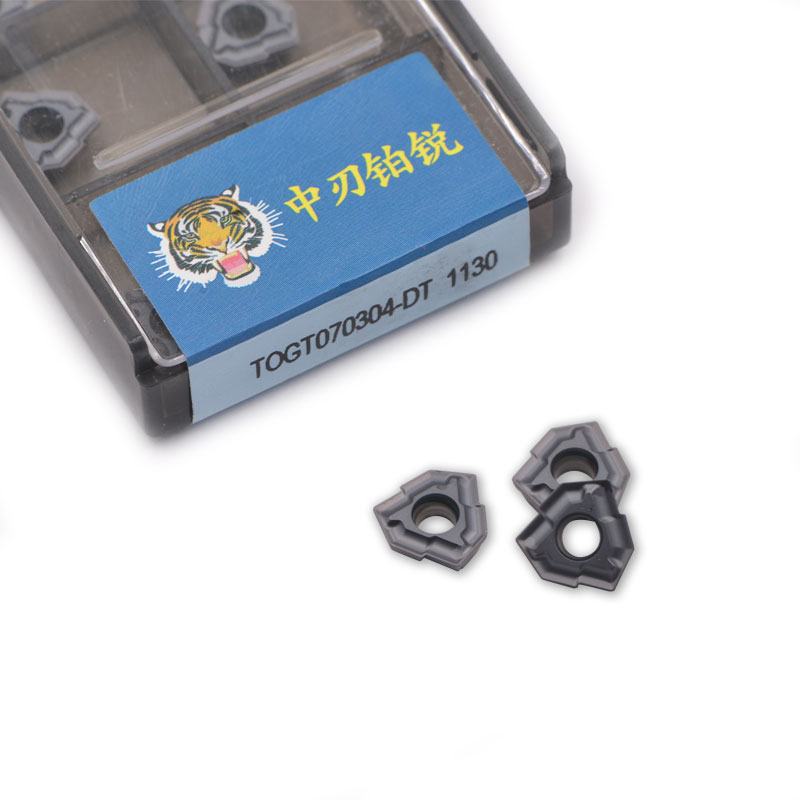Tungsten carbide cutting inserts (cemented carbide inserts) have become the core tools of modern machining because of their high hardness, wear resistance and high temperature resistance, and are widely used in high-precision, high-efficiency and high-load cutting scenarios. The following are its main application areas:
1. Automobile manufacturing
In the processing of core components such as engines and transmissions, tungsten steel blades are used for turning crankshafts, milling cylinder blocks, drilling connecting rods, etc. For example, CBN (cubic boron nitride) coated blades can efficiently process hardened steel gears, while TiAlN coated blades are suitable for high-speed cutting of aluminum alloy wheels, significantly increasing the production line time.
2. Aerospace
Aircraft landing gear, turbine blades and other parts are often made of titanium alloy, superalloy and other difficult materials. Tungsten steel blades achieve low vibration cutting through special grooves (such as large front Angle design) and ultra-fine grain matrix to avoid material hardening. PVD (physical vapor deposition) coated blades can extend their life by more than 3 times in this field.
3. Mold manufacturing
The cavity machining of plastic molds and die casting molds depends on ball-end milling cutters and copying blades. Tungsten steel matrix with nano-coating (such as AlCrN) can resist the high-temperature sticking phenomenon of die steel. When finished, the mirror-polished blade can achieve a surface roughness below Ra0.2μm.
4. Energy equipment
Large parts such as wind power bearings and nuclear power valves need heavy cutting, and the impact resistant grade of tungsten steel blades (such as YG series with TaC) can withstand the load of intermittent cutting. For example, when turning a 100-meter-long wind turbine spindle, the ceramic composite blade can maintain a high feed rate of 0.3mm/r.
5. Electronic precision parts
Micro structures such as mobile phone frames and semiconductor fixtures are processed using micro tungsten steel blades (less than 0.1mm in diameter), with a five-axis machine tool to achieve micron-level accuracy. Diamond coated blade can avoid cutting edge breakage in graphite electrode milling.
6. Rail transit
The batch processing of high-speed rail wheel sets and brake discs relies on high-stability blades, and the life of cermet blades in such high-carbon steel turning is 50% higher than that of traditional tools.
Future trend
With the maturity of superhard coatings (such as diamond nanofilms) and additive manufacturing slot technology, tungsten steel blades are further developing into intelligent (embedded sensors) and customized to meet new needs such as high-speed dry cutting and green manufacturing. Its application boundary is still continuing to expand, becoming the “industrial tooth” of high-end manufacturing.
Post time: Apr-07-2025

